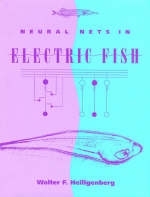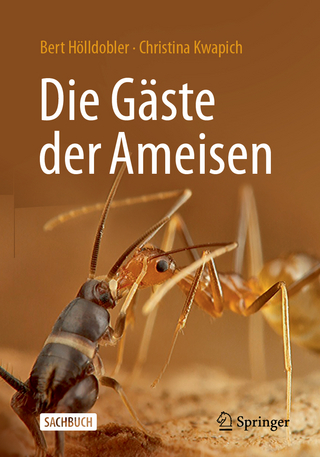
Neural Nets in Electric Fish
MIT Press (Verlag)
978-0-262-08203-7 (ISBN)
- Keine Verlagsinformationen verfügbar
- Artikel merken
Heiligenberg's pioneering research describes the behavior of one species, the jamming avoidance response in the electric fish Eigenmannia, providing a rich mine of data that documents the first vertebrate example of the workings of the entire behavioral system from sensory input to motor output. Neural Nets in Electric Fish presents the principles and detailed results that have emerged from this exciting program. Heiligenberg's introduction familiarizes the reader with the unusual sensory modality electroreception, demonstrating the rationale and the motive behind the research. The text, which includes many helpful new pedagogical graphs, takes up the behavioral work done in the early 1980s, from explorations of peripheral receptors, the hindbrain, the midbrain, and finally diencephalon, to the most recent studies of motor output. Neural Nets in Electric Fish clearly describes Heiligenberg's analysis of the complex nature of the electrical stimulus delivered to Eigenmannia during jamming avoidance, and explains the novel two-parameter notation he uses to represent the different stages in information processing, giving many examples of the notation's power. The book relates all known behavioral phenomena of the jamming avoidance response to specific properties of the underlying neural network organization and draws interesting parallels between the electric sense and other sensory processing systems, such as the barn owl's sound localization system, motion detection systems in vision, and bat echolocation.
Walter F. Heiligenberg is Professor of Behavioral Physiology at Scripps Institution of Oceanography, University of California, San Diego. Mark Konishi is Bing Professor of Behavioral Biology at the California Institute of Technology.
Part 1 Introduction: why study electric fish?; experimental strategies. Part 2 The behaviour and ecology of electric fish: types of electric fish and their electric organ discharges; evolutionary and ecological considerations; noise and signal interference. Part 3 The jamming avoidance response of Eigenmannia: the experimental opening of a loop; behavioral rules for the JAR. Part 4 Neuronal implementation of the jamming avoidance response: the coding of amplitude and phase modulations by tuberous electroreceptors; the electrosensory lateral line lobe; details in the circuitry of the ELL and its modulation by recurrent descending input from the nucleus praeeminentialis; the torus semicircularis; the gating of amplitude information by phase information - a mechanisms for discriminating the sign of Df; projections of the torus semicircularis - the search for the pathway controlling the JAR; the diencephalic nucleus electrosensorius, a sensory-motor interface; the diencephalic prepacemaker nucleus; the medullary pacemaker nucleus - control of the electric organ; a summary flow diagram of neuronal structures and functions controlling the JAR. Part 5 General principles in the neuronal organization of the jamming avoidance response: the separation of task-specific sensory channels; the central convergence of channels and the conversion of neuronal codes; the representation of stimulus variables in ordered maps; the emergence of "recognition" neurons and motor programs; the distributed processing of sensory information and the shared use of neuronal circuits; the control of motivational states through social signals; recurrent descending loops - searchlights and central representations of sensory expectation?; developmental and evolutionary considerations.
| Reihe/Serie | Computational Neuroscience Series |
|---|---|
| Vorwort | Mark Konishi |
| Verlagsort | Cambridge, Mass. |
| Sprache | englisch |
| Maße | 180 x 231 mm |
| Gewicht | 522 g |
| Themenwelt | Naturwissenschaften ► Biologie ► Humanbiologie |
| Naturwissenschaften ► Biologie ► Zoologie | |
| ISBN-10 | 0-262-08203-9 / 0262082039 |
| ISBN-13 | 978-0-262-08203-7 / 9780262082037 |
| Zustand | Neuware |
| Haben Sie eine Frage zum Produkt? |
aus dem Bereich


